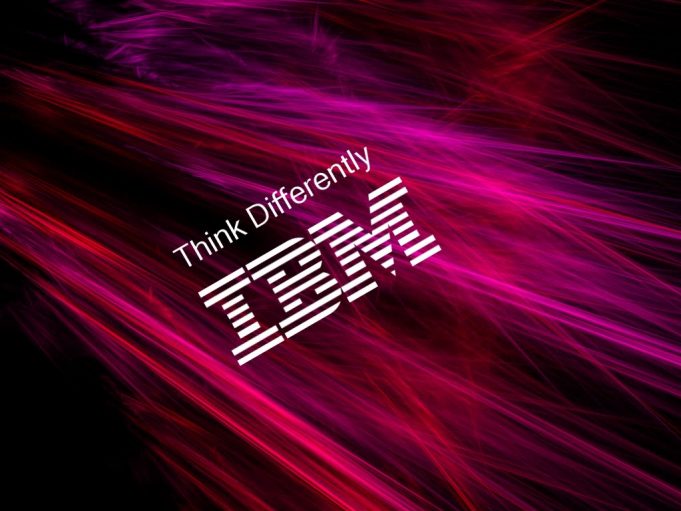This report provides the last five years revenues and revenue growth of International Business Machines Corp (IBM) from 2012 to 2016. IBM generated a total of $79.9 billion revenues during 2016. IBM reported a revenue growth of -2.2% year-over-year during 2016. The revenues and the revenue growth correspond to the fiscal year ending in December.
IBM REVENUES FROM 2012 TO 2016
Here are the revenues and the revenue growth details of IBM during the last five years:
- IBM generated a total of $102.9 billion revenues during 2012. IBM reported a revenue growth of -3.8% year-over-year during 2012.
- IBM generated a total of $98.4 billion revenues during 2013. IBM reported a revenue growth of -4.4% year-over-year during 2013.
- IBM generated a total of $92.8 billion revenues during 2014. IBM reported a revenue growth of -5.7% year-over-year during 2014.
- IBM generated a total of $81.7 billion revenues during 2015. IBM reported a revenue growth of -11.9% year-over-year during 2015.
- IBM generated a total of $79.9 billion revenues during 2016. IBM reported a revenue growth of -2.2% year-over-year during 2016.
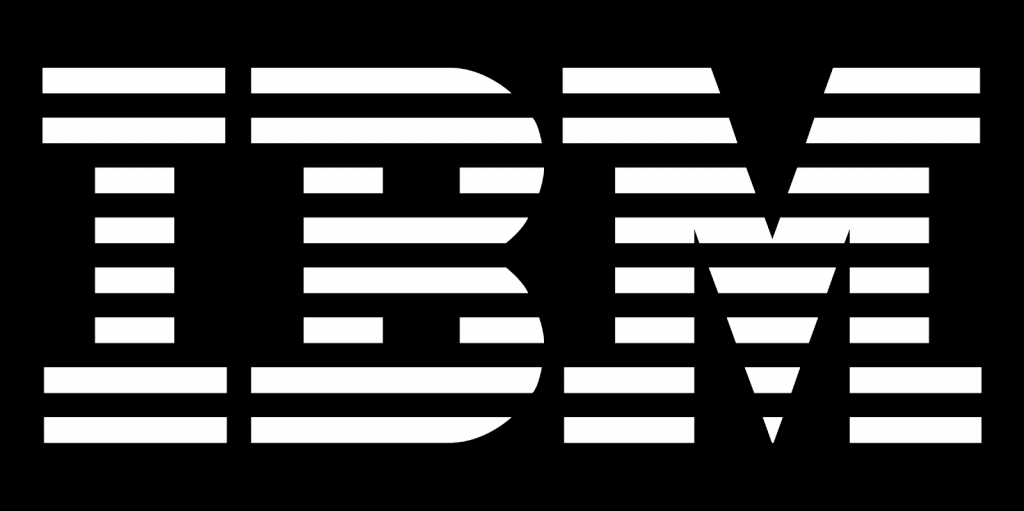
WHY ANALYZE REVENUE GROWTH?
Revenue growth is the most commonly analyzed financial metric. Revenue Growth is the percent increase (or decrease) of a company’s revenue between two time periods. It is computed by using the following formula: ((revenues during the time period two – revenues during the time period one) / revenues during the time period one)*100. If the time periods are two consecutive years, then the revenue growth is referred to as the annual revenue growth year-over-year. If the time periods are two consecutive quarters, then the revenue growth is referred to as the quarterly revenue growth quarter-over-quarter. If the time periods refer to the same quarter in the two consecutive years, then the revenue growth is referred to as quarterly revenue growth year-over-year. In case the time periods are two non-consecutive years, then the revenue CAGR (Commutative Annual Growth Rate) is computed.
Revenue growth analysis is important for a number of reasons. First, it helps in understanding how a business is performing. If the revenue growth rates are positive, it means the business is performing well and the revenues are increasing. If the revenue growth rates are negative, it means the revenues are declining and the company needs to take measures to increase them. If they don’t, the company will continue to shrink. Second, a company’s historical revenue growth analysis along with the market size and market share analysis helps in forecasting the future revenues of a company. Third, a comparison of a company’s growth rates with its competitors helps in determining who is winning more business. A revenue growth higher than the industry average translates into increasing market share. Companies with very high revenue growth rates have the potential to be the industry disrupters.
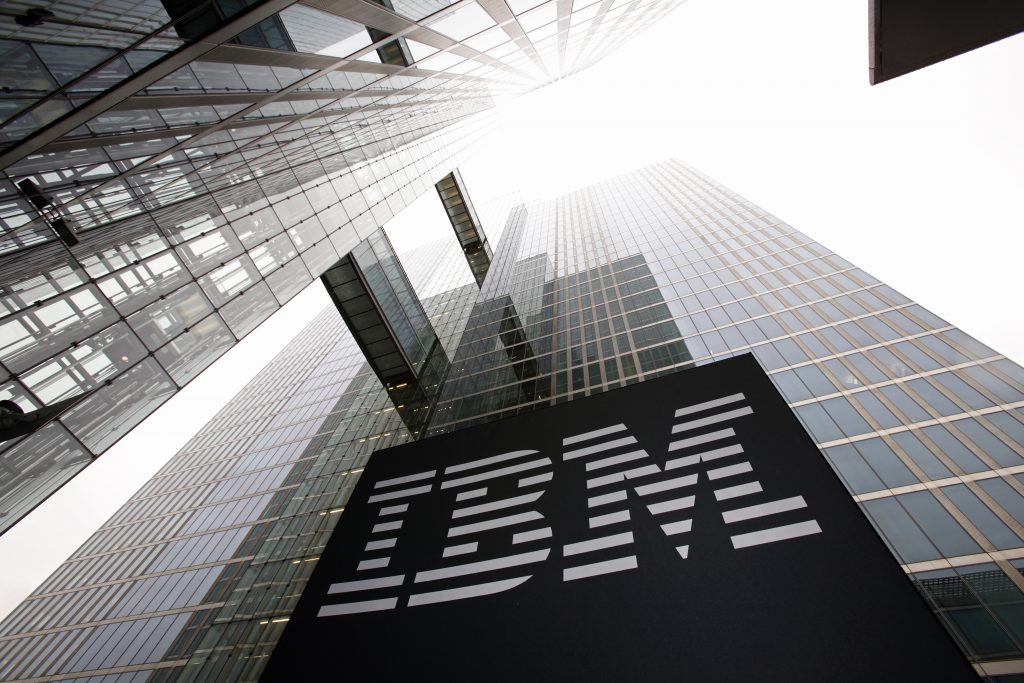
IBM RANKING
With $79.9 billion revenues, IBM ranked number 31 in the R&P; Research list of top-3000 public companies in the US by revenues during 2016. Each one of the top-3000 companies generated more than $50 million of annual revenues during 2016.
The top-20 companies in the US by revenues during 2016 were:
- Walmart ($482.1 billion)
- ExxonMobil ($226.1 billion)
- Berkshire Hathaway ($223.6 billion)
- Apple ($215.6 billion)
- McKesson ($190.9 billion)
- UnitedHealth Group ($184.8 billion)
- CVS Health ($177.5 billion)
- General Motors ($166.4 billion)
- AT&T; ($163.8 billion)
- Ford Motor ($151.8 billion)
- AmerisourceBergen ($146.8 billion)
- Amazon ($136 billion)
- Verizon ($126 billion)
- General Electric ($123.7 billion)
- Cardinal Health ($121.5 billion)
- Costco ($118.7 billion)
- Walgreens Boots Alliance ($117.4 billion)
- Chevron ($114.5 billion)
- Kroger ($109.8 billion)
- Express Scripts Holding ($100.3 billion)
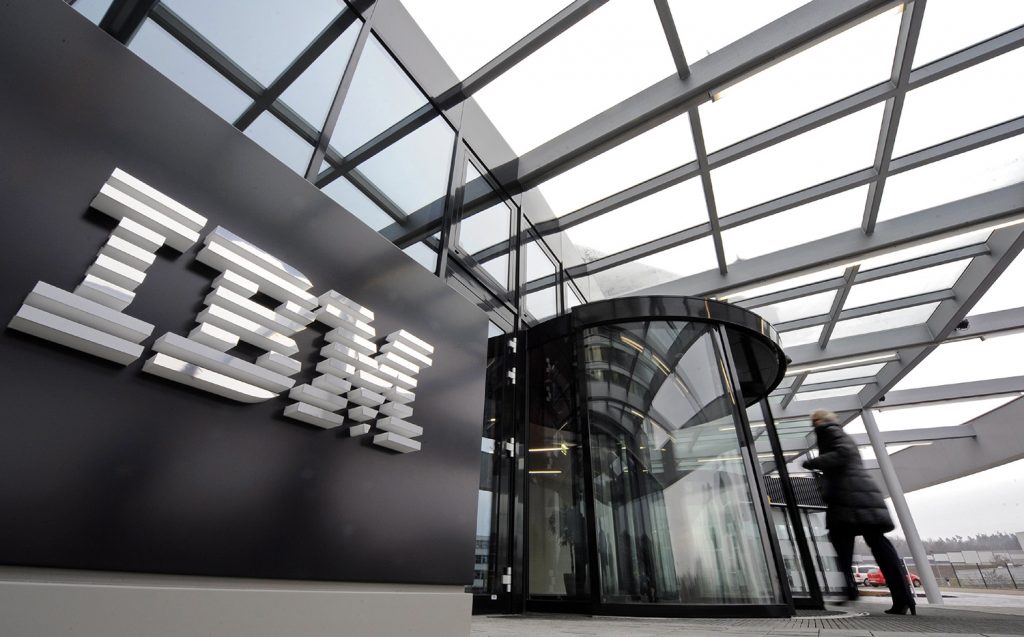
For the purpose of performance benchmarking of a company with a sector or industry average, R&P; Research associates every company with one sector and one industry. An industry consists of companies with related/similar business models. A sector comprises of a group of related/similar industries. For example, Life Sciences sector is comprised of following industries: Pharmaceuticals; Medical Devices; Biotechnology; Diagnostics & Scientific Instruments.
IBM is associated with Technology Sector, IT Consulting and Outsourcing Services Industry.
With $79.9 billion revenues, IBM ranked number 5 of all the companies in the US Technology sector. There were a total of 406 public companies in the US Technology sector that had revenues greater than $50 million during 2016.
The top-10 companies in the US Technology sector by revenues during 2016 were:
- Apple ($215.6 billion)
- Amazon ($136 billion)
- Alphabet ($90.3 billion)
- Microsoft ($85.3 billion)
- IBM ($79.9 billion)
- Intel ($59.4 billion)
- Hewlett Packard Enterprise ($50.1 billion)
- Cisco Systems ($49.2 billion)
- HP ($48.2 billion)
- Oracle ($37 billion)

Technology sector is comprised of the following industries: Computers Systems and Peripherals; Software; Semiconductor; IT Consulting and Outsourcing Services; Networking Equipment and Services; Internet; Other. The definitions for each of the industries is as follows:
- Computers Systems and Peripherals industry includes companies primarily engaged in manufacturing of personal computers, servers, mainframes, workstations, and other computer accessories and peripherals such as storage drives, mice, keyboards and printers. It also includes manufacturers of mobile phones and tablets.
- Software industry includes businesses providing software products such as operating systems, productivity suites, enterprise software, data and analysis software, advertising and marketing software, engineering and manufacturing software, networking software, and IT management software. It also includes companies providing industry-specific software focused on different sectors such as Financials, Automotive, Telecom, Utilities, Travel, Real Estate, Media, and Publishing.
- Semiconductor industry includes companies primarily engaged in manufacturing and distribution of semiconductor products such as microprocessors, chipsets, motherboards, flash memory, and wired and wireless connectivity products. It also includes companies that provide semiconductor equipment and services to the semiconductor industry.
- IT Consulting and Outsourcing Services industry includes companies primarily engaged in providing information technology consulting and outsourcing services to other businesses. The services include IT consulting, systems integration, application development and management, IT infrastructure management, and network operations management.
- Networking Equipment and Services industry includes companies primarily engaged in manufacturing and distribution of networking and communications equipment for transporting data, voice, and video traffic across intranets, extranets, and the Internet. The key products include routers and switches for local and wide-area networks, cable modems, teleconferencing equipment, and wireless access points.
- Internet industry includes Internet-based businesses providing products and services such as search engines, social networking, web hosting, email, domain name registration, and eCommerce. It also includes industry information/services portals focused on different sectors such as Financials, Automotive, Travel, Health, Real Estate, Media, and Publishing.
- Other industry includes companies providing products such as photocopiers, fax machines, point of sale machines, audio/video technologies, and video games. It also includes technology companies that are not part of other six technology industries.
With $79.9 billion revenues, IBM ranked number 1 of all the companies in the US IT Consulting and Outsourcing Services industry. There were a total of 28 public companies in the US IT Consulting and Outsourcing Services industry that had revenues greater than $50 million during 2016.

The top-10 companies in the US IT Consulting and Outsourcing Services industry by revenues during 2016 were:
- IBM ($79.9 billion)
- Hewlett Packard Enterprise ($50.1 billion)
- Accenture ($34.8 billion)
- DXC Technology ($18.1 billion)
- Cognizant ($13.5 billion)
- Automatic Data Processing ($11.7 billion)
- Leidos ($7 billion)
- NCR ($6.5 billion)
- Conduent ($6.4 billion)
- Insight Enterprises ($5.5 billion)
COMPANIES SEGMENTATION
To identify and analyze high/low growth or most/least profitable similar-size companies in different sectors or industries, R&P; research classifies all companies into different segments based upon their revenues, revenue growth, and net profit margins.
Based upon their annual revenues, the companies are classified into one of the following four segments:
- Mega companies, having revenues greater than $50 billion.
- Very Large companies, having revenues between $10 billion and $50 billion.
- Large companies, having revenues between $1 billion and $10 billion.
- Mid-size companies, having revenues between $50 million and $1 billion.
With $79.9 billion revenues, IBM was in the Mega companies revenue segment during 2016. There were a total of 54 companies in the Mega companies revenue segment during 2016.
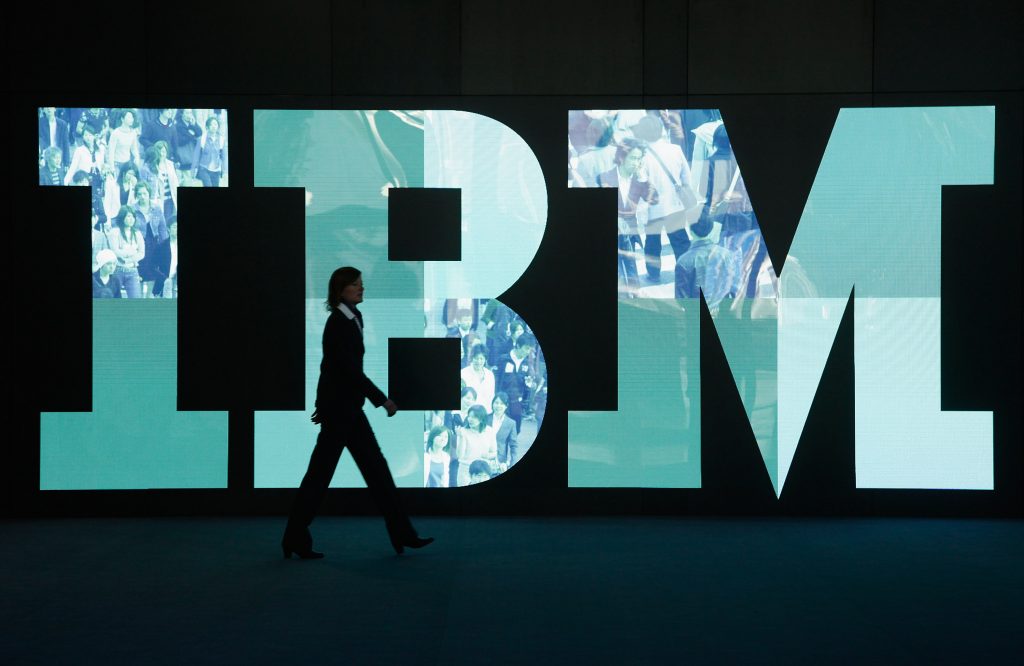
Based upon their annual revenue growth, the companies are classified into one of the following eight segments:
- Very High positive growth companies, having annual revenue growth greater than 50%.
- High positive growth companies, having annual revenue growth between 20% and 50%.
- Medium positive growth companies, having annual revenue growth between 5% and 20%.
- Low positive growth companies, having annual revenue growth between 0% and 5%.
- Low negative growth companies, having annual revenue growth between -5% and 0%.
- Medium negative growth companies, having annual revenue growth between -20% and -5%.
- High negative growth companies, having annual revenue growth between -50% and -20%.
- Very High negative growth companies, having annual revenue growth less than -50%.
With -2.2% revenue growth year-over-year, IBM was in the Low negative revenue growth segment during 2016. There were a total of 384 companies in the Low negative revenue growth segment during 2016. Of the US top-3000 companies, 1985 (nearly two-third of the total) had positive revenue growth and 1015 (nearly one-third of the total) had negative revenue growth during 2016.
Based upon their annual net profit margin, the companies are classified into one of the following eight segments:
- Very High positive margin companies, having net profit margin greater than 50%.
- High positive margin companies, having net profit margin between 20% and 50%.
- Medium positive margin companies, having net profit margin between 5% and 20%.
- Low positive margin companies, having net profit margin between 0% and 5%.
- Low negative margin companies, having net profit margin between -5% and 0%.
- Medium negative margin companies, having net profit margin between -20% and -5%.
- High negative margin companies, having net profit margin between -50% and -20%.
- Very High negative margin companies, having net profit margin less than -50%.
With a net margin of 14.9%, IBM was in the Medium positive net profit margin segment during 2016. There were a total of 1086 companies in the Medium positive net profit margin segment during 2016. Of the US top-3000 companies, 2244 (nearly three-fourth of the total) had positive net profit margin and 756 (nearly one-fourth of the total) had negative net profit margin during 2016.

COMPANY BUSINESS SUMMARY
International Business Machines Corporation provides information technology (IT) products and services worldwide. Its Cognitive Solutions segment includes Watson, a cognitive computing platform that interacts in natural language, processes big data, and learns from interactions with people and computers. The company’s Cognitive Solutions segment also offers data and analytics solutions, including analytics and data management platforms, cloud data services, enterprise social software, talent management solutions, and solutions tailored by industry; and transaction processing software that runs mission-critical systems in banking, airlines, and retail industries. The company’s Global Business Services segment offers business consulting services; delivers system integration, application management, maintenance, and support services for packaged software applications; and business process outsourcing services. Its Technology Services & Cloud Platforms segment provides cloud, project-based, outsourcing, and other managed services for enterprise IT infrastructure environments. This segment also offers technical support, and software and solution support; and integration software solutions. The company’s Systems segment offers servers for businesses, cloud service providers, and scientific computing organizations; data storage products and solutions; and z/OS, an enterprise operating system for z systems. Its Global Financing segment provides lease, installment payment plans, and loan financing services; short-term inventory and accounts receivable financing to suppliers, distributors, and remarketers; and remanufacturing and remarketing services. It has a strategic collaboration with ABB Ltd to develop industrial artificial intelligence solutions. The company was formerly known as Computing-Tabulating-Recording Co. and changed its name to International Business Machines Corporation in 1924. The company was founded in 1910 and is headquartered in Armonk, New York.
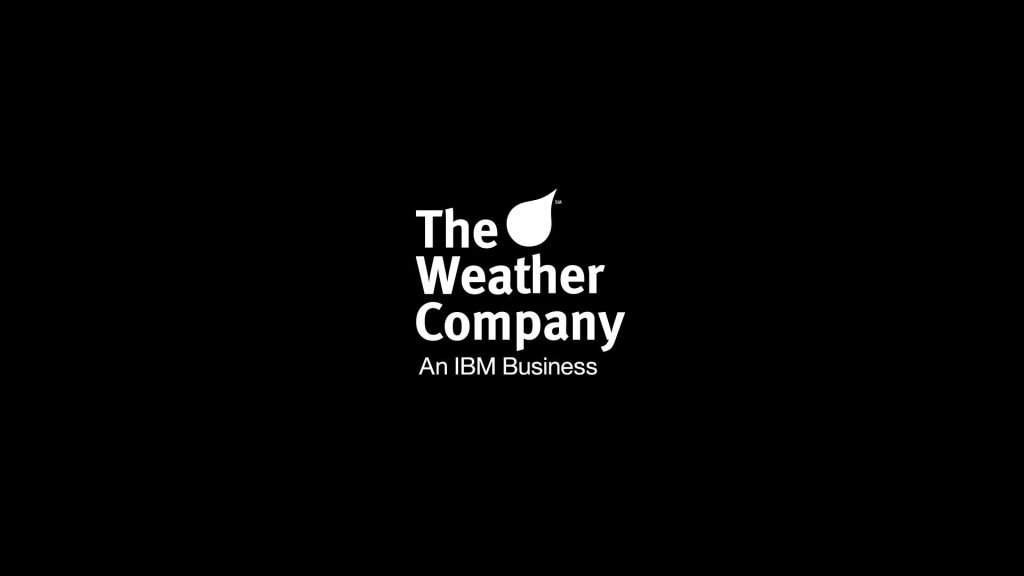
DATA SOURCE
The chart and the data on this page are sourced from the R&P; Research Industry Intelligence Platform. The platform provides the key financial metrics for all the public companies in the United States. The platform empowers users to compare last five or 15 years financial data of a company with the other companies or the industry averages. This benchmarking exercise yields powerful insights that can drive better business decisions.
INDUSTRY PEERS AND COMPETITORS OF IBM
Hewlett Packard Enterprise (HPE) Business Analysis – Analyze Historical Performance, Strategic…
Hewlett Packard Enterprise Co with $50 billion revenues in the year 2016 was the number 2 IT Consulting and Outsourcing Services company. Read this report to know the top competitors of Hewlett Packard Enterprise and identify growth and cost optimization opportunities of Hewlett Packard Enterprise
Accenture (ACN) Business Analysis – Analyze Historical Performance, Strategic Priorities, And…
Accenture Plc with $35 billion revenues in the year 2016 was the number 3 IT Consulting and Outsourcing Services company. Read this report to know the top competitors of Accenture and identify growth and cost optimization opportunities of Accenture
DXC Technology (DXC) Business Analysis – Analyze Historical Performance, Strategic Priorities,…
DXC Technology Co with $18 billion revenues in the year 2016 was the number 4 IT Consulting and Outsourcing Services company. Read this report to know the top competitors of DXC Technology and identify growth and cost optimization opportunities of DXC Technology
Cognizant (CTSH) Business Analysis – Analyze Historical Performance, Strategic Priorities, And…
Cognizant Technology Solutions Corp with $13 billion revenues in the year 2016 was the number 5 IT Consulting and Outsourcing Services company. Read this report to know the top competitors of Cognizant and identify growth and cost optimization opportunities of Cognizant
Automatic Data Processing (ADP) Business Analysis – Analyze Historical Performance, Strategic…
Automatic Data Processing Inc with $12 billion revenues in the year 2016 was the number 6 IT Consulting and Outsourcing Services company. Read this report to know the top competitors of Automatic Data Processing and identify growth and cost optimization opportunities of Automatic Data Processing
Leidos (LDOS) Business Analysis – Analyze Historical Performance, Strategic Priorities, And…
Leidos Holdings, Inc. with $7 billion revenues in the year 2016 was the number 7 IT Consulting and Outsourcing Services company. Read this report to know the top competitors of Leidos and identify growth and cost optimization opportunities of Leidos
REVENUES ANALYSIS
IBM (IBM) Revenues And Revenue Growth From 2012 To 2016
This report provides the last five years revenues and revenue growth of International Business Machines Corp (IBM) from 2012 to 2016. IBM generated a total of $79.9 billion revenues during 2016. IBM reported a revenue growth of -2.2% year-over-year during 2016. The revenues and the revenue growth correspond to the fiscal year ending in December.
IBM (IBM) Revenues And Revenue Growth From 2002 To 2016
This report provides the last fifteen years revenues and revenue growth of International Business Machines Corp (IBM) from 2002 to 2016. IBM generated a total of $79.9 billion revenues during 2016. IBM reported a revenue growth of -2.2% year-over-year during 2016. The revenues and the revenue growth correspond to the fiscal year ending in December.
IBM (IBM) Revenue Growth Comparison With Industry Growth From 2012 To…
This report provides a comparison of International Business Machines Corp (IBM) revenue growth with IT Consulting and Outsourcing Services industry growth during the last five years from 2012 to 2016. IBM reported a revenue growth of -2.2% year-over-year during 2016. The IT Consulting and Outsourcing Services industry growth was -0.6% year-over-year during 2016. IBM growth was slower than the industry during 2016.
PROFIT ANALYSIS
IBM (IBM) Net Profit And Net Margin From 2012 To 2016
This report provides the last five years net profit and net margin of International Business Machines Corp (IBM) from 2012 to 2016. IBM reported a total net income of $11.9 billion during 2016. IBM generated a total of $79.9 billion revenues during 2016. IBM net profit margin was 14.9% during 2016. The net profit and the net profit margin correspond to the fiscal year ending in December.
IBM (IBM) Net Profit And Net Margin From 2002 To 2016
This report provides the last fifteen years net profit and net margin of International Business Machines Corp (IBM) from 2002 to 2016. IBM reported a total net income of $11.9 billion during 2016. IBM generated a total of $79.9 billion revenues during 2016. IBM net profit margin was 14.9% during 2016. The net profit and the net profit margin correspond to the fiscal year ending in December.
IBM (IBM) Net Profit Margin Comparison With Industry From 2012 To…
This report provides a comparison of International Business Machines Corp (IBM) net profit margin with IT Consulting and Outsourcing Services industry net profit margin during the last five years from 2012 to 2016. IBM reported a net profit margin of 14.9% during 2016. The IT Consulting and Outsourcing Services industry net profit margin was 8.5% during 2016. IBM was more profitable than the industry during 2016.
COST EXPENSES ANALYSIS
IBM (IBM) Cost of Sales (COGS) Analysis From 2012 To 2016
This report provides the last five years cost of sales (COGS) analysis of International Business Machines Corp (IBM) from 2012 to 2016. IBM spent a total of $41.6 billion on COGS during 2016. IBM generated a total of $79.9 billion revenues during 2016. As a percentage of revenues, IBM spent 52.1% of its total revenues on COGS during 2016. The cost of sales (COGS) numbers are for the fiscal year ending in December.
IBM (IBM) Research & Development (R&D) Spending Analysis From 2012 To…
This report provides the last five years research and development (R&D;) expenses of International Business Machines Corp (IBM) from 2012 to 2016. IBM spent a total of $4.1 billion on research and development (R&D;) activities during 2016. IBM generated a total of $79.9 billion revenues during 2016. As a percentage of revenues, IBM spent 5.2% of its total revenues on R&D; activities during 2016. The R&D; spending numbers are for the fiscal year ending in December.
IBM (IBM) Sales, Marketing, General & Administrative (SG&A) Spending Analysis From…
This report provides the last five years sales, marketing, general & administrative (SG&A;) expenses of International Business Machines Corp (IBM) from 2012 to 2016. IBM spent a total of $21.1 billion on sales, marketing, general, and administrative (SG&A;) activities during 2016. IBM generated a total of $79.9 billion revenues during 2016. As a percentage of revenues, IBM spent 26.4% of its total revenues on SG&A; activities during 2016. The SG&A; spending numbers are for the fiscal year ending in December.
WORKING CAPITAL ANALYSIS
IBM (IBM) Inventory Spending Analysis From 2012 To 2016
This report provides the last five years inventory spending analysis of International Business Machines Corp (IBM) from 2012 to 2016. IBM invested a total of $1.6 billion on inventories during 2016. IBM generated a total of $79.9 billion revenues during 2016. As a percentage of revenues, IBM invested 1.9% of its total revenues on inventories during 2016. The inventory numbers are for the fiscal year ending in December.
IBM (IBM) Accounts Receivable (A/R) Analysis From 2012 To 2016
This report provides the last five years Accounts Receivable (A/R) analysis of International Business Machines Corp (IBM) from 2012 to 2016. IBM invested a total of $38.3 billion on accounts receivable during 2016. IBM generated a total of $79.9 billion revenues during 2016. As a percentage of revenues, IBM invested 47.9% of its total revenues on accounts receivable during 2016. The accounts receivable numbers are for the fiscal year ending in December.
IBM (IBM) Accounts Payable (A/P) Analysis From 2012 To 2016
This report provides the last five years Accounts Payable (A/P) analysis of International Business Machines Corp (IBM) from 2012 to 2016. IBM invested a total of $6.2 billion on accounts payable during 2016. IBM generated a total of $79.9 billion revenues during 2016. As a percentage of revenues, IBM invested 7.8% of its total revenues on accounts payable activities during 2016. The accounts payable numbers are for the fiscal year ending in December.
ASSET MANAGEMENT ANALYSIS
IBM (IBM) Property, Plant & Equipment (PP&E) Investment Analysis From 2012…
This report provides the last five years property, plant & equipment (PP&E;) investment analysis of International Business Machines Corp (IBM) from 2012 to 2016. IBM invested a total of $10.8 billion on property, plant & equipment (PP&E;) activities during 2016. IBM generated a total of $79.9 billion revenues during 2016. As a percentage of revenues, IBM invested 13.6% of its total revenues on PP&E; activities during 2016. The PP&E; investment numbers are for the fiscal year ending in December.
IBM (IBM) Intangible Assets Analysis From 2012 To 2016
This report provides the last five years Intangible assets analysis of International Business Machines Corp (IBM) from 2012 to 2016. IBM invested a total of $40.9 billion on Intangible assets during 2016. IBM generated a total of $79.9 billion revenues during 2016. As a percentage of revenues, IBM invested 51.2% of its total revenues on intangible assets during 2016. The Intangible asset numbers are for the fiscal year ending in December.


